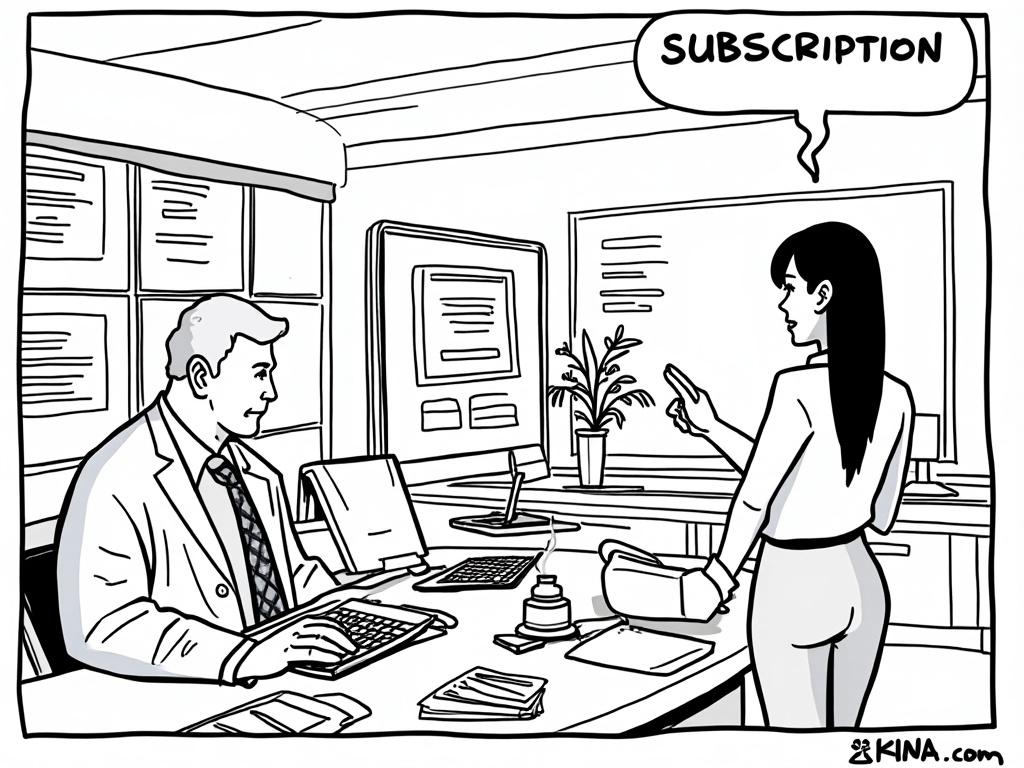
Understanding Capital Gains Tax When Selling Your Home: A Comprehensive Guide
Reading time: 12 minutes
Table of Contents
- Introduction to Home Sale Taxation
- Capital Gains Tax Fundamentals
- Primary Residence Exclusion: Your Biggest Tax Break
- Calculating Your Tax Liability
- Strategies for Reducing Capital Gains Tax
- Special Situations and Considerations
- State-Level Tax Considerations
- Real-World Case Studies
- Conclusion
- Frequently Asked Questions
Introduction to Home Sale Taxation
Selling your home represents one of the most significant financial transactions you’ll likely make in your lifetime. But amid the excitement of a successful sale and potential profit, there’s an important consideration many sellers overlook until it’s too late: tax implications.
Let’s be honest—tax talk isn’t exactly thrilling. However, understanding how home sale taxation works isn’t just about compliance; it’s about potentially saving thousands of dollars. The difference between a seller who understands capital gains tax rules and one who doesn’t can literally be measured in tens of thousands of dollars kept or unnecessarily surrendered to the IRS.
Consider this: A survey by the National Association of Realtors found that 61% of home sellers were uncertain about tax implications when selling their primary residence. This knowledge gap leads to missed opportunities and, in some cases, unexpected tax bills that diminish what should be a financial windfall.
In this comprehensive guide, we’ll navigate the complexities of home sale taxation with clarity and precision. Whether you’re selling your family home, an investment property, or inherited real estate, you’ll gain the knowledge needed to make informed decisions that optimize your financial outcome.
Capital Gains Tax Fundamentals
When you sell your house for more than you paid for it, the difference between your purchase price (adjusted for certain factors) and your selling price is known as a capital gain. The IRS considers this profit a taxable event—but how much you’ll pay depends on several factors.
Short-Term vs. Long-Term Capital Gains
The length of time you’ve owned your property significantly impacts your tax rate:
- Short-term capital gains: Properties owned for one year or less are taxed at your ordinary income tax rate, which can range from 10% to 37% depending on your tax bracket.
- Long-term capital gains: Properties owned for more than one year qualify for preferential tax rates of 0%, 15%, or 20%, based on your income level.
As tax attorney Jennifer Wilson explains, “The difference between short-term and long-term capital gains rates can be substantial. Holding a property just a few days longer to cross that one-year threshold could potentially save a seller thousands in taxes, depending on their income level and the size of the gain.”
Understanding Your Tax Basis
Before calculating any gain, you need to establish your “adjusted basis” in the property. This isn’t simply what you paid for the house; it includes:
- Original purchase price
- Certain closing costs from when you bought the property
- Cost of capital improvements (not regular maintenance)
- Selling expenses (real estate commissions, legal fees, etc.)
Here’s a quick example: If you purchased a home for $300,000, spent $50,000 on a kitchen renovation and $20,000 on a new roof, and paid $5,000 in qualifying closing costs, your adjusted basis would be $375,000. If you later sell for $500,000, your capital gain would be $125,000 (not the full $200,000 difference between purchase and sale prices).
Well, here’s the straight talk: Understanding your tax basis isn’t just about accounting—it’s about keeping more of your hard-earned money. Many sellers leave money on the table by failing to track and document legitimate basis increases.
Primary Residence Exclusion: Your Biggest Tax Break
If there’s one tax provision every homeowner should understand, it’s the primary residence exclusion (Section 121 exclusion). This powerful tax break allows qualified sellers to exclude up to $250,000 of capital gains ($500,000 for married couples filing jointly) from taxation.
Qualifying for the Exclusion
To qualify for this generous exclusion, you must meet both the ownership test and the use test:
- Ownership Test: You must have owned the home for at least two years during the five-year period ending on the date of sale.
- Use Test: You must have used the home as your principal residence for at least two years during that same five-year period.
These two years don’t need to be consecutive. For married couples filing jointly, only one spouse needs to meet the ownership test, but both must meet the use test to qualify for the full $500,000 exclusion.
Partial Exclusions
Even if you don’t meet the full two-year requirement, you might still qualify for a partial exclusion if your move was prompted by:
- A change in employment location (with a significant distance requirement)
- Health reasons
- Other unforeseen circumstances (such as divorce, multiple births from a single pregnancy, or natural disasters)
Quick Scenario: Imagine you’re selling your home after living in it for just 15 months because your employer transferred you to an office 300 miles away. While you don’t meet the standard two-year residence requirement, you would likely qualify for a partial exclusion based on the employment change exception. If you’re single, instead of the full $250,000 exclusion, you’d be entitled to 15/24 (the fraction of the two-year period you lived there) of $250,000, or approximately $156,250 of tax-free gain.
Calculating Your Tax Liability
Let’s walk through how to determine what, if anything, you’ll owe when selling your home:
Step-by-Step Calculation Process
- Determine your selling price (after commissions and other selling expenses)
- Calculate your adjusted basis (as explained earlier)
- Subtract your adjusted basis from your selling price to find your capital gain
- Apply any applicable exclusions
- Calculate tax on the remaining taxable gain based on your income and holding period
For long-term capital gains (properties held more than one year), the tax rates as of 2023 are:
| Filing Status | 0% Rate | 15% Rate | 20% Rate |
|---|---|---|---|
| Single | Up to $44,625 | $44,626 – $492,300 | Over $492,300 |
| Married Filing Jointly | Up to $89,250 | $89,251 – $553,850 | Over $553,850 |
| Head of Household | Up to $59,750 | $59,751 – $523,050 | Over $523,050 |
| Married Filing Separately | Up to $44,625 | $44,626 – $276,900 | Over $276,900 |
Additional Tax Considerations
High-income taxpayers may also be subject to the Net Investment Income Tax (NIIT), an additional 3.8% tax on investment income (including capital gains) that applies when your modified adjusted gross income exceeds certain thresholds ($200,000 for single filers, $250,000 for married filing jointly).
Pro Tip: The right preparation isn’t just about avoiding problems—it’s about creating a strategic timing plan for your home sale. If your gain will exceed the exclusion amount, consider selling in a year when your other income is lower to potentially qualify for a lower capital gains rate.
Strategies for Reducing Capital Gains Tax
Even if you’re facing a taxable gain, several legitimate strategies can help minimize your tax burden:
Maximize Your Adjusted Basis
Document and include all eligible costs in your basis calculation, such as:
- Home improvements (keep those receipts!)
- Certain closing costs from your purchase
- Settlement fees and closing costs when selling
Remember, every dollar added to your basis is a dollar removed from your taxable gain.
Strategic Timing and Tax Planning
Consider these potential tax-saving approaches:
- Time your sale strategically: If possible, complete your sale in a tax year when your income is lower, potentially qualifying you for a lower capital gains rate.
- Installment sales: Spreading the receipt of proceeds over multiple tax years can sometimes result in a lower overall tax burden.
- 1031 exchanges for investment properties: If you’re selling an investment property, a like-kind exchange under Section 1031 can defer taxation on your gain.
- Invest in Opportunity Zones: Reinvesting capital gains into Qualified Opportunity Zone Funds can provide significant tax benefits, including deferral and potential partial exclusion of the original gain.
As certified financial planner Michael Rodriguez notes, “Capital gains tax strategy shouldn’t be an afterthought. The most effective tax planning happens before the sale, not when you’re filling out your tax return the following April.”
Special Situations and Considerations
Some home sales involve unique circumstances that affect taxation:
Inherited Properties
When you inherit a home, you receive a “stepped-up basis” equal to the property’s fair market value at the time of the previous owner’s death. This can significantly reduce your capital gains tax liability if you later sell the property.
For example, if your parent purchased a home for $100,000 that was worth $400,000 when they passed away, your basis would be $400,000—not the original $100,000 purchase price. If you later sell for $450,000, you’d only pay capital gains tax on $50,000.
Divorce Situations
The transfer of property between spouses as part of a divorce settlement is generally not taxable. However, if one spouse keeps the house and later sells it, special rules may apply to the capital gains exclusion eligibility.
Under certain circumstances, the selling spouse may be able to count the ex-spouse’s ownership and use of the home toward meeting the two-year requirements.
Vacant Land
If you sell vacant land adjacent to your primary residence, different rules apply. The primary residence exclusion generally doesn’t apply to vacant land unless it’s sold simultaneously with the dwelling unit and meets certain other requirements.
State-Level Tax Considerations
Federal capital gains taxes aren’t your only potential tax concern when selling a home. State-level taxation can significantly impact your overall tax bill:
State Income Tax Variations
States handle capital gains in various ways:
- States with no income tax: Alaska, Florida, Nevada, South Dakota, Tennessee, Texas, Washington, and Wyoming don’t tax capital gains at the state level.
- States with preferential capital gains rates: Some states (like Arizona and Vermont) offer lower tax rates for capital gains.
- States that fully tax capital gains: Most states tax capital gains at the same rate as ordinary income, with rates ranging from under 5% to over 13% (California).
For high-value homes in high-tax states, the state tax bite can sometimes exceed the federal tax liability.
Special State Exemptions
Some states offer their own exclusions or deductions that differ from federal rules. For instance, Massachusetts offers a separate state-level exclusion on capital gains from the sale of a principal residence. Research your specific state’s provisions before selling.
Real-World Case Studies
Let’s examine two realistic scenarios to illustrate how different situations affect home sale taxation:
Case Study 1: The Long-Term Family Home
The Johnson family purchased their home in 2000 for $200,000. Over 23 years of ownership, they completed several major improvements:
- Kitchen renovation: $45,000
- Bathroom remodels: $30,000
- New roof and windows: $25,000
- Finishing the basement: $35,000
In 2023, they sell the home for $650,000, paying $39,000 in real estate commission and closing costs.
Tax calculation:
Adjusted basis: $200,000 (purchase) + $135,000 (improvements) = $335,000
Selling price after expenses: $650,000 – $39,000 = $611,000
Capital gain: $611,000 – $335,000 = $276,000
Since the Johnsons are married filing jointly and have lived in the home as their primary residence for more than two years, they can exclude up to $500,000 of gain.
Result: Their entire $276,000 gain is tax-free. They owe $0 in capital gains tax.
Case Study 2: The Investment Property Conversion
Sarah purchased a condo as an investment property in 2015 for $300,000. She rented it out for four years, claiming depreciation deductions totaling $43,636 during that period. In 2019, she moved into the condo herself and lived there until selling it in 2023 for $500,000.
Tax calculation:
Original basis: $300,000
Adjusted basis after depreciation: $300,000 – $43,636 = $256,364
Selling price (after $30,000 in selling costs): $470,000
Total gain: $470,000 – $256,364 = $213,636
This scenario is more complex because the property wasn’t always a primary residence. Sarah meets the use test (she lived there for the last 4 years), but the ownership use wasn’t entirely as a primary residence.
Since she lived in the property for 4 out of the 8 years she owned it (50% of the time), she can exclude 50% of the gain under the primary residence exclusion. Additionally, she must recapture the depreciation she claimed while renting the property.
Result:
Excludable portion of gain: $213,636 × 50% = $106,818
Taxable gain: $106,818 + $43,636 (depreciation recapture) = $150,454
Sarah would owe long-term capital gains tax on $106,818 (likely at 15% rate) and would pay 25% on the $43,636 depreciation recapture, for a total federal tax bill of approximately $26,931.
Conclusion
Navigating the tax implications of selling your home doesn’t have to be overwhelming. The key is understanding the rules that apply to your specific situation and planning accordingly. Remember these essential takeaways:
- The primary residence exclusion is your most powerful tax-saving tool when selling your home—make sure you understand if and how you qualify.
- Keeping detailed records of all home improvements and qualifying expenses can significantly reduce your taxable gain.
- The timing of your sale matters, both for exclusion qualification and potentially for optimal tax brackets.
- Special situations like inherited properties, investment conversions, and vacation homes have distinct tax rules.
- State taxes can substantially impact your overall tax bill—don’t focus solely on federal taxation.
While this guide provides comprehensive information, tax laws change, and individual situations vary greatly. Consulting with a qualified tax professional before selling a high-value property or dealing with complex circumstances is always advisable. With proper planning and knowledge, you can make informed decisions that legally minimize your tax burden and maximize your home sale proceeds.
Frequently Asked Questions
If I sell my house for less than I paid for it, can I claim a tax loss?
Unfortunately, losses on the sale of a personal residence are not tax-deductible. The IRS considers such losses personal rather than investment losses. However, if part of your home was used exclusively for business purposes (like a home office), you might be able to deduct a portion of the loss related to that business use. Investment properties work differently—losses on those sales can generally be deducted subject to certain limitations.
How does the $250,000/$500,000 exclusion work for unmarried co-owners?
When unmarried individuals co-own a property that serves as the primary residence for both, each owner can potentially claim up to $250,000 of exclusion on their share of the gain, provided they each independently meet the ownership and use tests. The gain is generally allocated according to ownership percentage. For example, if two individuals each own 50% of a home and meet all requirements, they could each exclude up to $250,000 of their respective shares of the gain, potentially excluding up to $500,000 total.
What if I’ve claimed a home office deduction for part of my residence?
If you’ve legitimately claimed home office deductions, this creates a special situation for the portion of your home used for business. If you’ve taken depreciation deductions for your home office, that depreciation must be “recaptured” (taxed) when you sell, typically at a 25% rate. Additionally, the exclusion doesn’t apply to the portion of your gain attributable to business use, unless you stopped using that space for business before selling. Proper planning, such as converting your home office back to personal use before selling, may help maximize your available exclusion.



